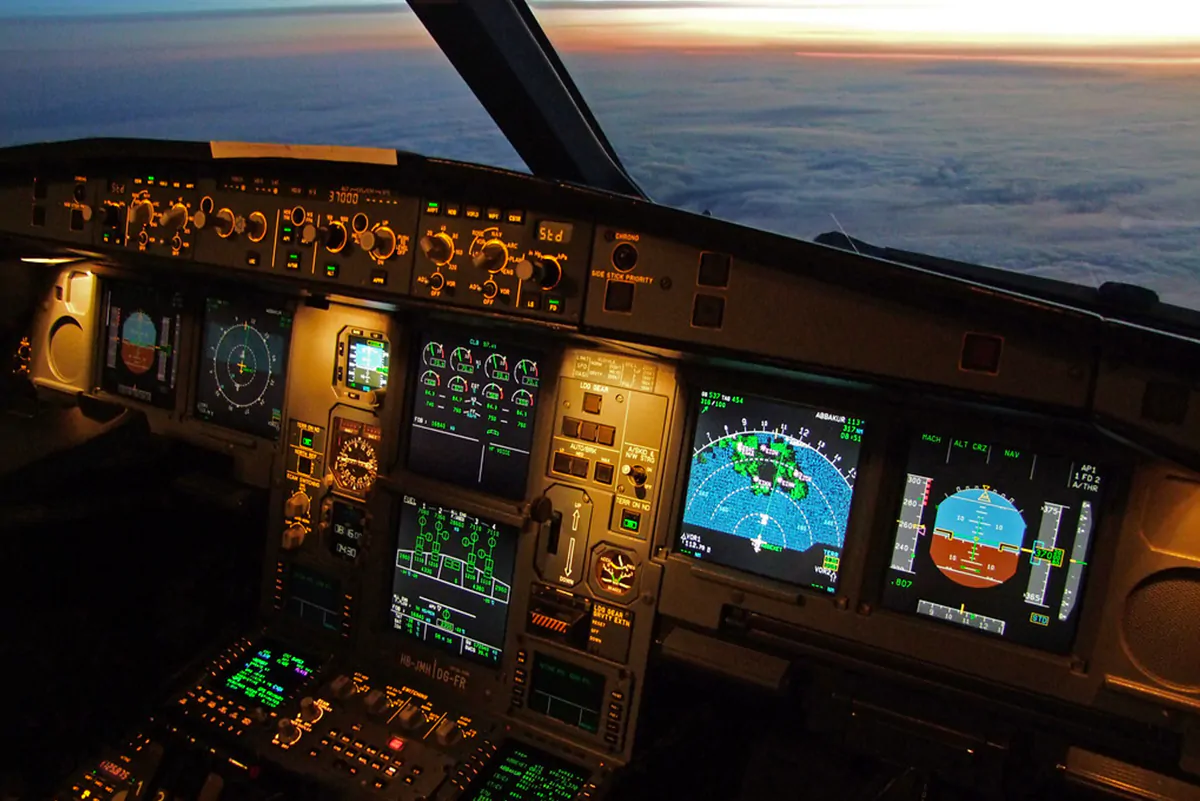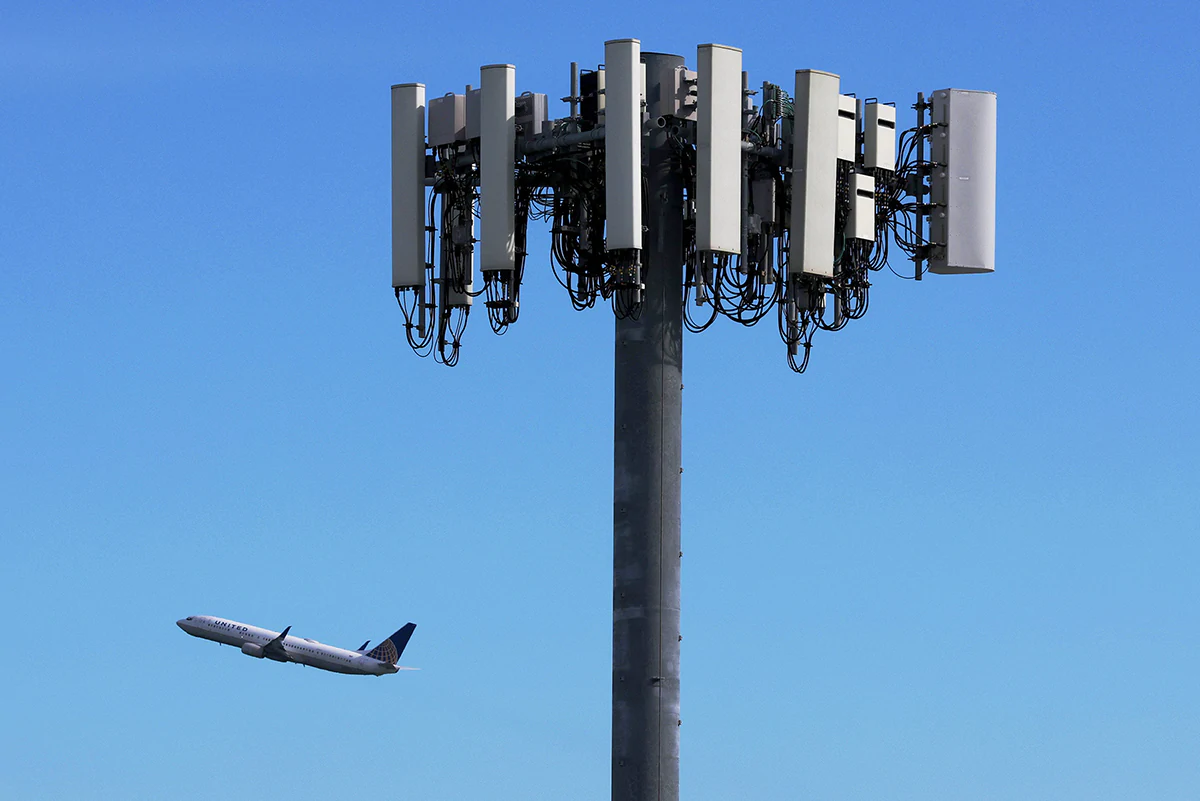No transportation method is faster than flying. And at this time, no internet speed is faster than 5G.
The two cannot work close together, that at least what a number of airline companies initially said.
At first, they believed that 5G is a threat to their operations.
It all began when the Federal Communications Commission auctioned off the C-band spectrum (3.7 to 3.98 GHz) to U.S. wireless carriers in 2021, in part because T-Mobile showed that airline industry's research didn't investigate whether interference would occur in any realistic scenario.
The $81 billion sale would allow wireless companies to provide the robust 5G services to the masses, including near airports. Airline companies quickly complained, saying that the use of that technology could interfere with aircraft radar altimeter, which is the instrument that tells pilots how high their plane is off the ground.
Altimeters use spectrum from 4.2 GHz to 4.4 GHz, and are crucial instruments for landing airplanes in low-visibility conditions.

The companies argued that 5G near airports could create schedule disruption, and perhaps delaying tens of thousands of flights a year.
According to them, 5G could cost the industry billions of dollars.
In response, AT&T and Verizon agreed only to temporarily delay 5G deployment at major airports.
"We are frustrated by the FAA's inability to do what nearly 40 countries have done, which is to safely deploy 5G technology without disrupting aviation services, and we urge it do so in a timely manner," AT&T spokesperson Megan Ketterer. CNN is owned by AT&T.
After a few more temporary 5G service delays, the White House and telecommunication companies finally reached a deal to delay the rollout of the technology near airports until there can be a consensus on how to address the potential problem.
"It's taken a while to get to the right spot, but I feel like we're in the right spot," said Doug Parker, the CEO of American Airlines. "I don't think you're going to see any material disruption going forward because of this."
"The technical experts that are working on it tell us it's really not that complicated once they all are able to share information and work on it," Parker added.
"So they seem encouraged that we'll be able to address this in a way that allows for full deployment of 5G, including near airports. I don't expect until we get to the point that everyone is really comfortable that you'll see anything turned on near airports, because no one wants to go through this again."
"While I wish it happened earlier, the good news is we now have everyone engaged, the FAA and DOT at the highest levels, the [...] aircraft manufacturers, airlines and the telecoms," said Scott Kirby, the United CEO. "While we don't have a final resolution quite yet, I'm confident we'll get there."
Soon later, the companies backtracked, and said that the rollout of 5G won't hurt.
Airline CEOs said that the process of ensuring that airplane altimeters work in 5G areas is "really not that complicated."
The CEOs statements marked a sudden shift, which came only days after they signed a letter claiming that 5G on the C-band would cause "catastrophic disruption" to air travel.
No “material disruption going forward.”
"It's taken a while to get to the right spot, but I feel like we're in the right spot," American Airlines Doug Parker said. "I don't think you're going to see any material disruption going forward because of this."
"While I wish it happened earlier, the good news is we now have everyone engaged, the FAA and DOT at the highest levels, the... aircraft manufacturers, airlines, and the telecoms," United Airlines CEO Scott Kirby said. "While we don't have a final resolution quite yet, I'm confident we'll get there."
"The technical experts that are working on it tell us it's really not that complicated once they all are able to share information and work on it," Parker also said. "So they seem encouraged that we'll be able to address this in a way that allows for full deployment of 5G, including near airports. I don't expect until we get to the point that everyone is really comfortable that you'll see anything turned on near airports, because no one wants to go through this again."

Following this, the FAA announced clearances for 13 altimeters that can filter out 5G transmissions from the C-band spectrum that is licensed to wireless operators.
These account for those used by all Boeing 717, 737, 747, 757, 767, 777, 787, and MD-10/-11 models; all Airbus A300, A310, A319, A320, A330, A340, A350, and A380 models; and some Embraer 170 and 190 regional jets.
More approvals are planned to bringing the U.S. closer to 100 percent capacity.
It's worth noting that the Federal Communications Commission created a 220 MHz guard band to protect airplane equipment. But old and/or poorly built altimeters may be unable to filter out transmissions from other spectrum bands.
The FCC pointed out that the 220 MHz guard band "is double the minimum guard band requirement discussed in initial comments by Boeing and ASRC [Aviation Spectrum Resources]."
"[W]ell-designed equipment should not ordinarily receive any significant interference (let alone harmful interference) given these circumstances," the FCC said when it approved 5G usage with the 220 MHz guard band.